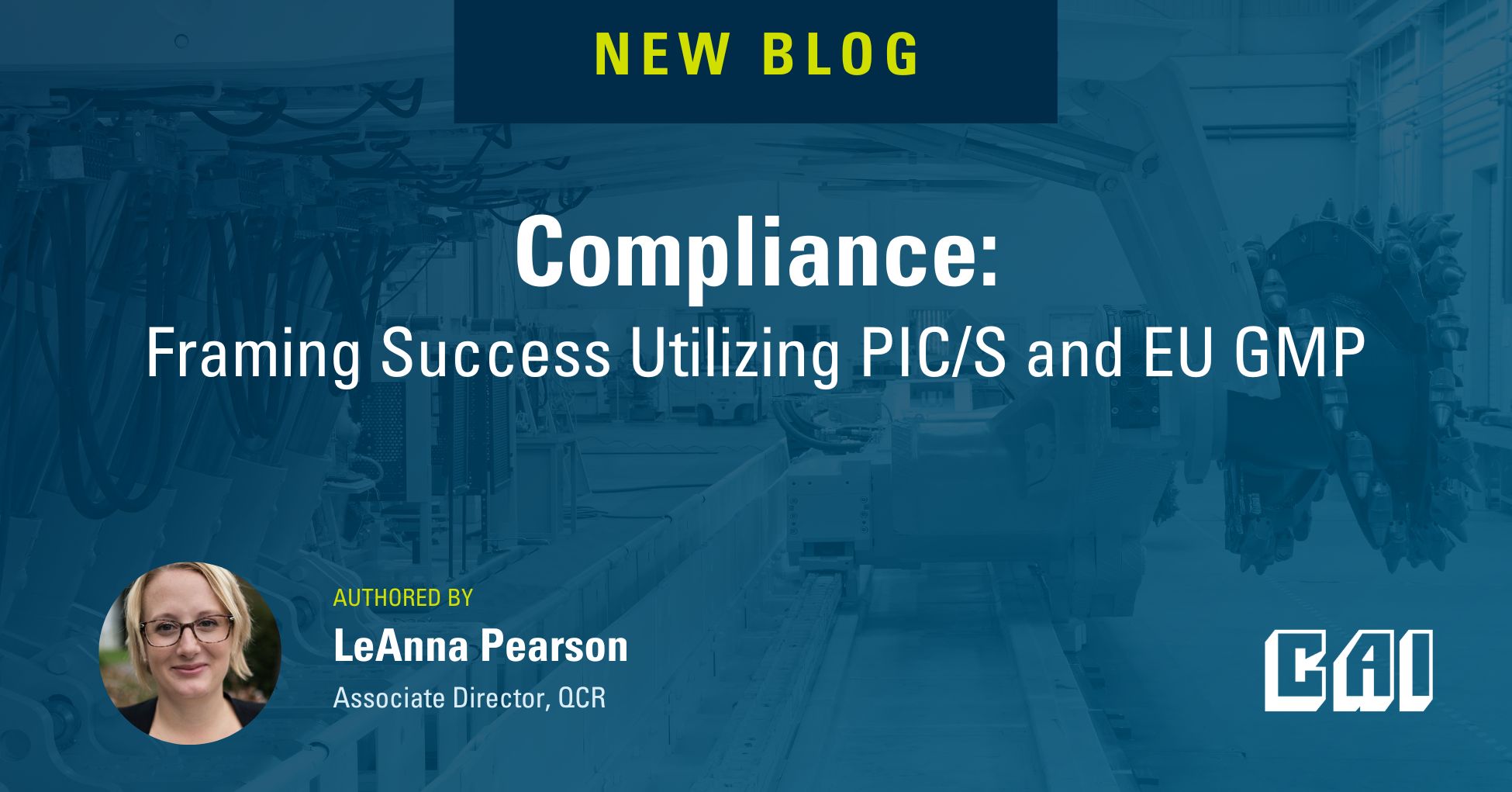
Compliance: Framing Success Utilizing PIC/S and EU GMP
Introduction
PIC/S was founded in 1995 as an extension of PIC (Pharmaceutical Inspection Convention). They are a non-binding cooperative arrangement between 56 different Regulatory Authorities. Just seeing the number 56 does not have the same impact as seeing the map below and understanding the true global reach of PIC/S. Their mission is “to lead the international development, implementation and maintenance of harmonized GMP standards and quality systems of inspectorates in the field of medicinal product.” PIC/S is not open to anyone, Membership is restricted to Regulatory Authorities only. This means that individuals and companies cannot join or sway the authoring of the guidance when written.
Following the updates to Annex 1, PIC/S published a new guidance document, ” Guide to Good Manufacturing Practice for Medicinal Products, Annexes,” on 25 Aug 2023, the same date that Annex 1 went into effect. This seems to align serendipitously.
PIC/S Guide to Good Manufacturing Practice for Medicinal Products Annexes
The PIC/S GMP Guide was published in December 2000 and has undergone 19 revisions. It is divided into four linked major publications, two major sections, and several Annexes. Part 1 focuses on the GMP principles for the manufacture of medicinal products and includes the nine EU GMP chapters. Part 2 focuses on APIs and contains 20 different sections.
The latest revision to the PIC/S GMP Guide in Aug 2023 aligns it with the revised Annex 1.
While there are not many differences between the PIC/S GMP Guide and the EU GMP Guides, a few of them are highlighted below:
- Pharmaceutical Product is referred to as Medicinal Product in the PIC/S GMP Guide.
- The PIC/S GMP Guide does not reference EU directives or MRAs
- Qualified Person is referred to as Authorized Person in the PIC/S GMP Guide
- Since not all participating authorities under the PIC Scheme are parties to the European Pharmacopoeia Convention, the PIC/S Guide simply states European or other relevant Pharmacopeia.
Annex 1 Revision Recap
While Annex 1 is not the focus of this blog, here’s a brief reminder of the major overhaul of Annex 1 to paint a picture for creating the PIC/S GMP Guide.
Annex 1 was initially published in 1971 and underwent multiple changes and at the end of 2017 the first draft of a major revision was published. Between 2017 and 2023 the changes in the pharmaceutical industry were so major that the GMP/GDP Inspectors Working Group and the PIC/S Committee jointly recommended that Annex 1 be revised. The revised Annex 1 Guideline is adapting to the shift in medicinal and therapeutic products along with the new personalized medicines and advanced therapies. In short, Annex 1 went from just 16 pages to 56. This was a major overhaul to catch up with the changes in industry.
FDA, MHRA and PIC/S – Teamwork at its finest
A question we all too often receive… can the FDA enforce the new Annex 1 revisions? The simple answer is no, the FDA is only reviewing and pulling from the Code of Federal Regulations (CFRs). The longer answer is ‘where there is a violation there is a way’. With PIC/S creating a common ground for the 56 different regulatory authorities and allowing a mutual confidence between them all we should expect cooperation between agencies.
Both the FDA and MHRA certify, inspect, and cite pharmaceutical facilities. PIC/S does not perform any of these functions. The collaboration between MHRA and FDA has become tighter and more evident in the past years. At many of the recent conferences, it is noted that this collaboration is only growing stronger. So, where does PIC/S fall into this? Well, PIC/S is a common thread between so many regulatory authorities. They are truly serving as another connection for collaboration and global teamwork.
Future
While we all have our speculations about what is next, they are just that speculations. However, if we learn from history, I believe that we can get close to predicting what is next. I hope we find a way to cross-collaborate and reduce inspections allowing us to increase our speed to patient. Patients in the end are what matters most, not compliance for compliance’s sake but getting a high-quality product to the patient faster, and more efficiently, while being compliant with global regulations.
Tags: Annex 1, FDA, GMP, PIC/S, EU GMP, Guidance, Good Manufacturing Practice, Speed to Patient



